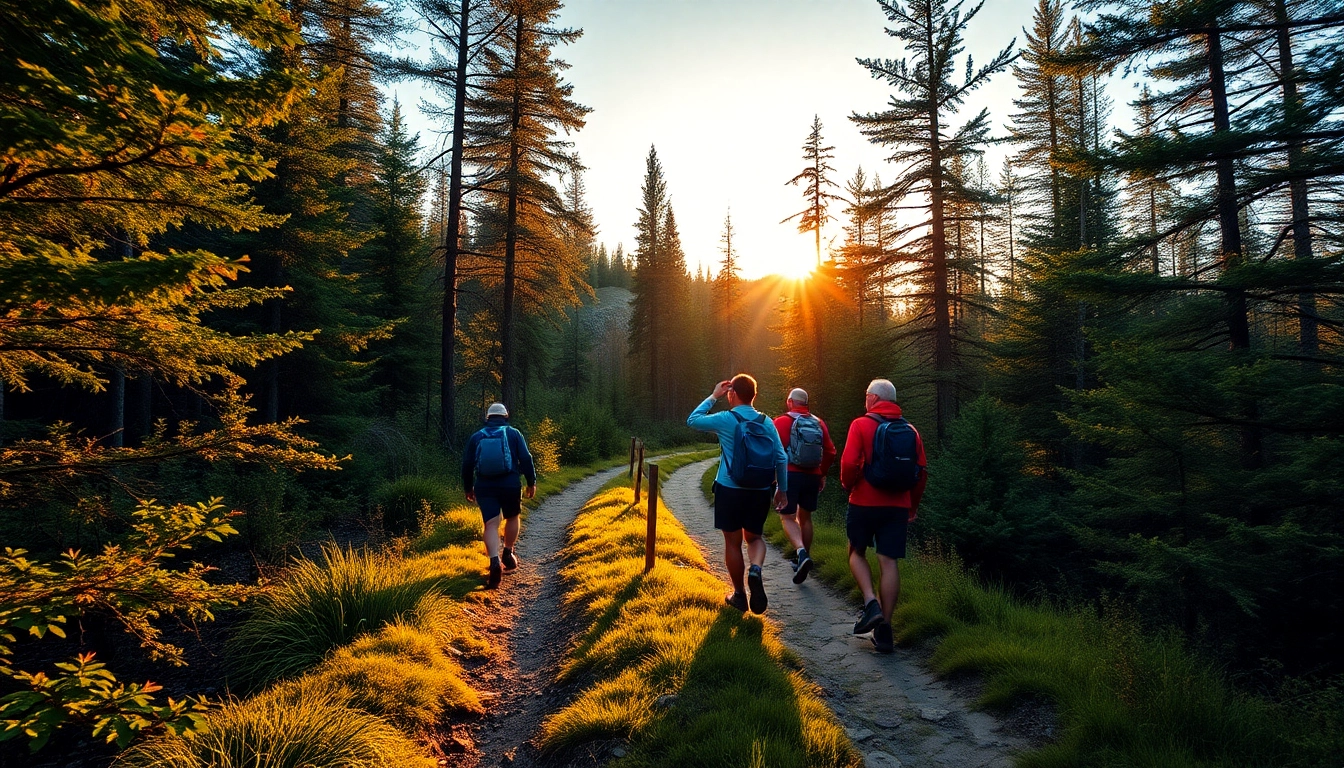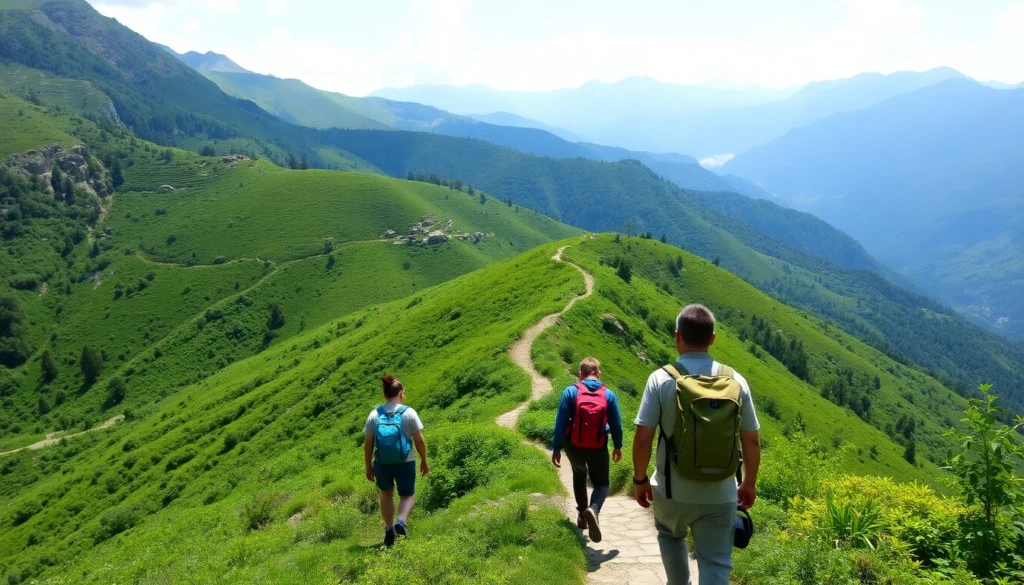Introduction to Hiking: Benefits and Basics for Enthusiasts
Hiking is more than just a leisure activity; it is a gateway to exploring nature, improving health, and enriching one’s spirit. Whether you are traversing gentle country trails or conquering rugged mountain paths, for many, hike embodies a commitment to adventure, mindfulness, and a deeper connection with the outdoors. The increasing popularity of hiking worldwide underscores its profound benefits, which extend beyond physical fitness to encompasses mental well-being, environmental awareness, and cultural appreciation.
What is hiking? Definition and key features
At its core, hiking is a long, vigorous walk in natural environments, typically on trails or footpaths in countryside or wilderness areas. Unlike casual strolling, hiking involves sustained effort over varying terrains, often requiring specific skills and preparation. The activity has deep historical roots, with evidence of hikes dating back centuries as humans sought resources, exploration opportunities, or sacred sites. According to Wikipedia, hiking “developed in Europe during the eighteenth century as a form of both recreation and physical exercise,” evolving into a popular outdoor pursuit across the globe.
Modern hiking embraces a broad range of experiences, from leisurely walks in local parks to multi-day backpacking adventures. The key features that define hiking include its intentional connection with nature, engagement with diverse landscapes, and the use of specialized gear and techniques tailored to terrain difficulty. This outdoor activity supports physical exercise, mental rejuvenation, and can even serve as a form of eco-tourism promoting sustainable travel.
Health benefits of hiking: physical and mental well-being
Numerous scientific studies confirm that hiking offers exceptional health benefits. Physically, it enhances cardiovascular fitness, strengthens muscles, improves flexibility, and promotes weight management. Depending on terrain and pace, hiking can burn between 430 to 700 calories per hour, making it an effective exercise for maintaining overall health.
Mentally, hiking has been linked to reduced stress, improved mood, and enhanced cognitive function. The natural scenery, fresh air, and immersion in wilderness environments foster mindfulness and elevate levels of serotonin. Psychologists advocate regular outdoor activity, including hiking, to combat anxiety, depression, and burnout. For instance, a 2020 study published in Frontiers in Psychology revealed that outdoor activities positively influence mental health and resilience, emphasizing the therapeutic value of nature immersion.
Furthermore, hiking encourages social bonding when done in groups, nurtures a sense of achievement, and promotes environmental stewardship awareness.
Different types of hikes: leisurely walks, day hikes, and multi-day treks
The diversity of hiking experiences caters to different skill levels, interests, and time commitments. Here are some common categories:
- Leisurely walks: Short, easy-paced strolls in parks, botanical gardens, or local trails. Ideal for beginners, families, or those seeking relaxation without strenuous effort.
- Day hikes: Moderate-length hikes ranging from 5 to 20 miles, usually ending in the same day. These hikes often feature scenic vistas, challenging terrains, and involve adequate planning for food, water, and safety.
- Multi-day treks: Extended journeys spanning several days, often involving camping or staying in mountain lodges. These require comprehensive planning, appropriate gear, and physical conditioning, exemplified by iconic routes like the Appalachian Trail or the Andes Expeditions.
Choosing the right type of hike depends on your experience, fitness level, and interests. Each provides unique rewards and challenges that can be tailored to personal goals or adventure pursuits.
Planning Your Perfect Hike: From Trails to Preparation
Selecting the right trail: difficulty, scenery, and distance
Effective hiking begins with meticulous planning. Selecting an appropriate trail involves assessing several factors: difficulty level, scenery, and distance. Resources like trail guides, maps, and online databases such as AllTrails or local hiking organizations can help identify routes that match your skill set.
Beginners should start with well-maintained, shorter, and less technical trails, gradually progressing to more challenging terrains. Experienced hikers seeking adventure may prefer rugged, remote paths with significant elevation changes or unique geological features.
Scenery plays a vital role: some trails boast breathtaking vistas of mountains, lakes, or forests, while others focus on cultural or historical significance. Always consider your physical capacity and prepare for weather conditions and terrain difficulty to ensure a safe and enjoyable experience.
Essential gear for hiking success
Proper gear is foundational to a safe and comfortable hike. Key items include:
- Footwear: High-quality hiking shoes or boots provide support, traction, and protection against rough terrains.
- Clothing: Layered clothing suited to weather conditions, including moisture-wicking base layers, insulating mid-layers, and waterproof outerwear.
- Navigation tools: Maps, compasses, GPS devices, and trail markers to prevent getting lost.
- Hydration and nutrition: Water bottles, hydration packs, energy bars, and snacks to sustain energy levels.
- Safety equipment: First aid kits, multi-tools, headlamps, and whistles for emergencies.
Investing in the right gear improves safety and enjoyment, and it mitigates common challenges like weather changes or unexpected obstacles.
Safety tips and emergency preparedness
Hiking safety requires proactive planning. Always inform someone about your route and estimated return time. Check weather forecasts before heading out and carry necessary gear accordingly.
Be aware of wildlife, Poisonous plants, and terrain hazards. Carry a fully stocked first aid kit and know basic first aid procedures. In emergency situations, stay calm, use your communication devices, and follow established protocols or leave clear signals for rescue teams.
Navigation skills are crucial; never rely solely on electronic devices in remote areas. Always carry a physical map and learn how to read it. Preparing for challenges ensures a safe adventure and peace of mind.
Gear and Equipment: Choosing the Best for Your Hike
Hiking shoes and apparel: comfort and durability
Footwear is arguably the most critical component of hiking gear. Well-fitted, durable, and suitable for terrain type significantly reduces injury risks and discomfort. Experts recommend breaking in new shoes before long hikes to prevent blisters and hotspots.
Clothing should prioritize moisture management, breathability, and weather resistance. Quick-drying fabrics like nylon or polyester are preferable. In colder climates, layered insulation with thermal leggings, hats, and gloves is essential for warmth.
Proper apparel enhances both safety and enjoyment, allowing hikers to adapt to environmental conditions and focus on the journey rather than discomfort.
Navigation tools: maps, GPS, and trail markers
Navigation is fundamental to safe hiking. Traditional maps and compasses offer reliable backups to digital devices, especially in areas with poor signal reception. GPS devices and smartphone apps are valuable for real-time tracking and route planning but should be used in conjunction with manual navigation skills.
Trail markers, cairns, and signage are typically present on established routes. Familiarize yourself with terrain features and trail signs beforehand. Learning basic orienteering skills enhances confidence and resilience in unforeseen situations.
Accessories for comfort and safety: hydration packs, first aid kits
Additional accessories improve hike quality and safety. Hydration packs allow for continuous water intake without pauses, crucial in dry or warm environments. Lightweight, portable first aid kits help address minor injuries immediately, preventing escalation.
Other useful accessories include lightweight trekking poles for stability, sun protection gear such as hats and sunglasses, and multi-tools for versatility. Packing smartly and choosing high-quality accessories ensures readiness for various scenarios.
Maximizing Your Hiking Experience: Tips for Adventure and Sustainability
Leave no trace principles and eco-friendly practices
To preserve the natural beauty and integrity of trails, hikers should adopt Leave No Trace principles, which include packing out all trash, staying on designated paths, respecting wildlife, and minimizing environmental impact.
Eco-friendly practices also involve using sustainable gear, avoiding single-use plastics, and educating others about conservation. Supporting local communities and adhering to regulations enhances the ethical and sustainable aspect of hiking adventures.
Photography and documenting your hikes
Documenting hikes through photography or journaling enriches the experience and shares its beauty with others. Use lightweight cameras or smartphones with protective gear. Focus on capturing landscapes, flora and fauna, and candid moments to create a vivid memory archive.
Many hikers develop social media accounts or blogs centered around outdoor adventures, inspiring others and fostering a community of nature lovers. Remember to prioritize safety over photography, especially on challenging terrains.
Engaging with local trail communities and resources
Joining local hiking groups, forums, or conservation organizations offers valuable resources, mentorship, and safety support. Community groups often organize group hikes, trail maintenance projects, and educational programs that deepen appreciation and responsibility toward nature.
Utilizing local parks’ ranger stations or visitor centers can provide trail maps, updates, and safety advice, making your hiking experience more informed and connected.
Tracking Progress and Improving Your Hiking Skills
Using apps and devices to monitor your hikes
Modern technology enables hikers to track their performance, routes, elevation gains, and calories burned via dedicated apps like Strava, Gaia GPS, or AllTrails. GPS watches and fitness trackers furnish real-time data, facilitating goal setting and progress assessment.
Analyzing this data helps identify strengths and areas for improvement, enabling safer and more efficient planning for future adventures.
Setting goals and progressing safely
Establishing achievable objectives, from distance milestones to technical skills, encourages ongoing growth. Always increase difficulty gradually to avoid overexertion or injury. Incorporate cross-training activities, such as strength training and flexibility exercises, to enhance overall hiking ability.
Listening to your body is essential; rest appropriately and recognize signs of fatigue or discomfort. With deliberate progression and safety measures, hikers can push boundaries while minimizing risks.
Advanced techniques: trail running, backpacking, and rugged terrains
As experience and confidence grow, many hikers explore advanced pursuits like trail running for speed and agility, backpacking for remote exploration, or tackling rugged terrain such as rock scrambles or glacier crossings. Each demands specialized skills, equipment, and physical conditioning.
Training programs, navigation mastery, and environmental knowledge are crucial for success in these endeavors. Engaging with expert guides or participating in workshops enhances safety and skill development.

